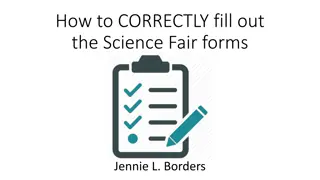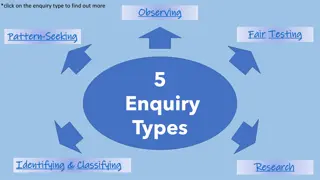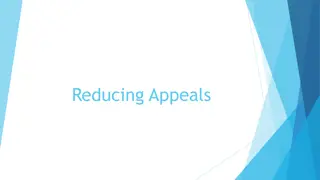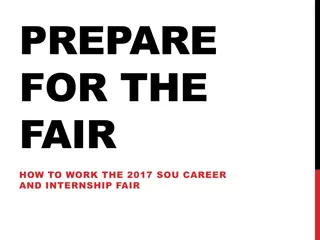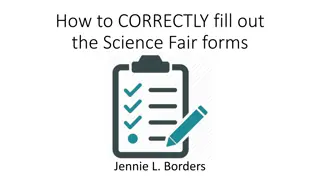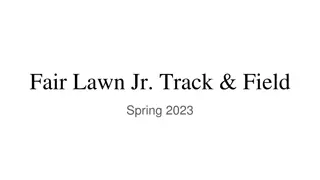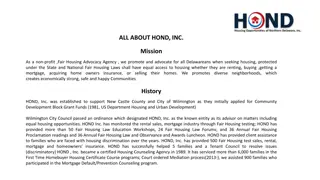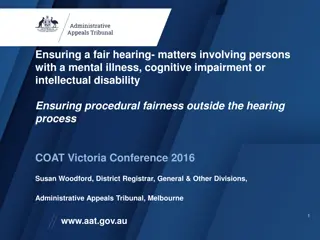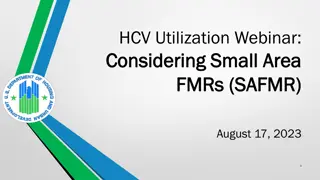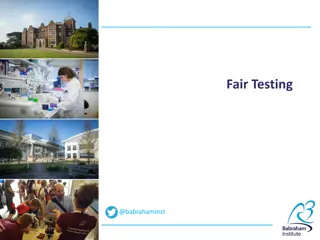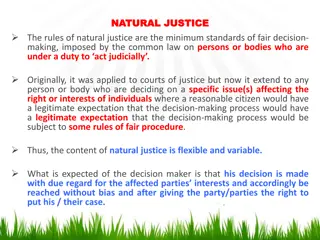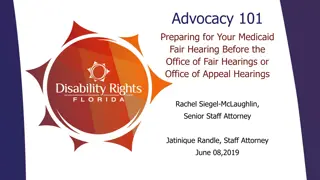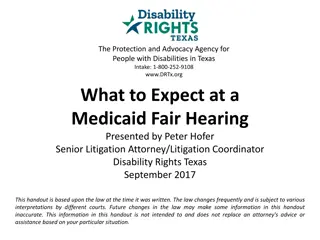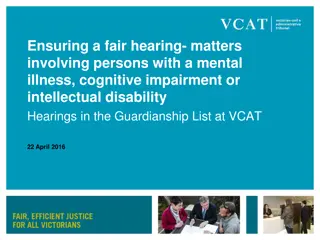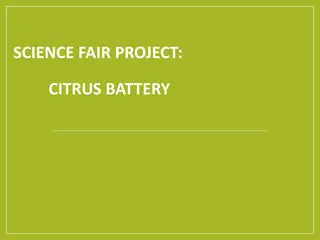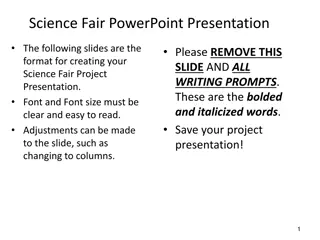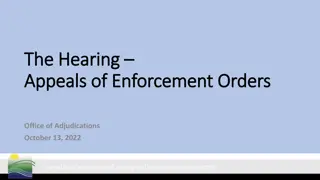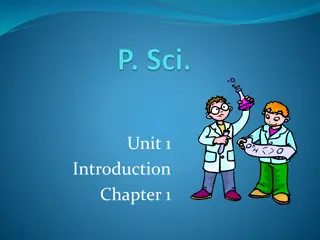Science Fair Preparation Guide
Get ready for the upcoming science fair with this comprehensive guide. The guide includes information on project deadlines, judging details, the scientific method, data analysis, and project requirements. It also provides important instructions regarding attendance, submission of paperwork, and review processes. Stay organized and informed to ensure a successful science fair experience.
Download Presentation

Please find below an Image/Link to download the presentation.
The content on the website is provided AS IS for your information and personal use only. It may not be sold, licensed, or shared on other websites without obtaining consent from the author. Download presentation by click this link. If you encounter any issues during the download, it is possible that the publisher has removed the file from their server.
E N D
Presentation Transcript
SCIENCE FAIR Wednesday, January 6th Project due Monday, January 4th Judging in Learning Commons 9-11 am Judging will be conducted through a Zoom meeting. Students will be assigned a judging time. Students will have 15 minutes to present and answer questions
The Scientific Method Identify Question Do Background Research Construct Hypothesis Test with an Experiment Accept or Reject Hypothesis Report Results
STATEMENT OF PURPOSE (WHY IS PROJECT IMPORTANT) TITLE Due Monday, Jan. 4th NO EXCEPTIONS! DATA ANALYSIS DATA and OBSERVATIONS 1. Graphs 2. Charts/Data Tables 3. Photos that help promote understanding 4. Diagrams Project will be sent to judges prior to judging. HYPOTHESIS CONCLUSIONS SUMMARY OF PROCEDURES ABSTRACT FUTURE STUDIES (OPTIONAL)
Wed. January 6th - Judging in Learning Commons 9-11 am Judging will be conducted through a Zoom meeting. Students will be assigned a judging time. Students will have 15 minutes to present and answer questions. Judges will have already viewed project board.
How much longer do I need to attend the Tuesday meetings? Until your paperwork is submitted, corrected, re-submitted and approved. Once approved check Schoology messages frequently for important due dates and instructions. Also check Sci. Fair website http://www.lms.stjohns.k12.fl.us/sciencefair/
So far, you should have: 1.Submitted a Student Information form. 2.Selected a Topic. 3.Started a Project Journal. 4.Conducted Background Research and created a Bibliography with 5 sources. 5.Visited the Rules Wizard and determined the forms you need. 6.Created a detailed Research Plan 7.Completed all Forms with the help of your parent.
Projects to be reviewed by Landrums Scientific Review Committee (SRC) and/or Institutional Review Board (IRB) : Human Subjects Vertebrate Animals Microorganisms Hazardous Activities (Chemical Reactions, Electricity, Fire) All other projects do not require special approval and can begin once paperwork is reviewed and corrected.
Title: Music! Harmful or Helpful? Purpose: To determine if listening to different types of music affects human heart rate and blood pressure Hypothesis: If there is a relationship between the type of music a subject is exposed to and their heart rate and blood pressure, then a subjects heart rate and blood pressure will be highest when listening to heavy metal and lowest when listening to dub. Independent variable: type of music played Dependent variable: heart rate (measured beats per minute) and blood pressure ( millimeters of mercury mmHg, systolic over diastolic) of human subjects Materials: iPod with: Go Go Gadget Gospel - Gnarls Barkley (hip hop) The Word - Junkyard Band (go-go) I am Ahab - Mastodon (heavy metal) Robot Rock - Daft Punk (house) Tidal Wave - Lee Scratch Perry (dub) Recliner Sphygmomanometer (to measure blood pressure) Stethoscope Stopwatch Ten human subjects, 5 male, 5 female, all between 13 and 43 years old Safety precautions : I will set the iPod volume to one-quarter bar to prevent hearing damage. I will screen all subjects to make sure that none suffer from high blood pressure, hypertension, irregular heart rate. I will have all students under the age of 18 fill out a parental consent form. I will have my project approved by a registered nurse who will serve as my adult sponsor. Procedures: 1.Create a quite environment for experiment with no distractions (no TV, other people, no talking). 2.Select ten human subjects. Do not select students with any health issues that might affect their safety or impact results. Have subjects fill out consent form. Keep forms in notebook. 3.Place subject in reclining position, resting, with legs uncrossed. 4.Wrap blood pressure cuff securely around the subject s left upper arm. Arm will be extended, palm up, and resting on chair. 5.Set iPod volume to one-quarter bar. Place the iPod earphones into the subjects ears. 6.Take subject s blood pressure and pulse rate before first song and record. 7.Play first song for two minutes. 8.Take subject s blood pressure and heart rate after song. Record. 9.Allow subject to relax for five minutes before playing next song. Subject may read, but should not do any activity that would increase heart rate or blood pressure. 10.Follow steps 2-8 for songs 3-5. 11.Repeat steps 1-10 for all ten human subjects. Bibliography: 5 sources What needs to be submitted for project approval? 1.Detailed Research Plan
Please be sure that you follow the Detailed Research Plan Instructions!
"Battery." Encyclopedia Britannica. 1990. What needs to be submitted for project approval? "Best Batteries." Consumer Reports Magazine 32 Dec. 1994: 71-72. Booth, Steven A. "High-Drain Alkaline AA-Batteries." Popular Electronics 62 Jan. 1999: 58. Brain, Marshall. "How Batteries Work." howstuffworks. 1 Aug. 2006 <http://home.howstuffworks.com /battery.htm>. 1.Detailed Research Plan 2.Bibliography with 5 sources "Cells and Batteries." The DK Science Encyclopedia. 1993. Dell, R. M., and D. A. J. Rand. Understanding Batteries. Cambridge, UK: The Royal Society of Chemistry, 2001. "Learning Center." Energizer. Eveready Battery Company, Inc. 1 Aug. 2006 <http://www.energizer.com /learning/default.asp>. "Learning Centre." Duracell. The Gillette Company. 31 July 2006 <http://www.duracell.com /au/main/pages/learning-centre-what-is-a battery.asp>
What needs to be submitted for project approval? 1.Detailed Research Plan 2.Bibliography with 5 sources 3.Forms 1, 1A, and 1B
What needs to be submitted for project approval? 1.Detailed Research Plan 2.Bibliography with 5 sources 3.Forms 1, 1A, and 1B
What needs to be submitted for project approval? 1.Detailed Research Plan 2.Bibliography with 5 sources 3.Forms 1, 1A, and 1B
What needs to be submitted for project approval? 1.Detailed Research Plan 2.Bibliography with 5 sources 3.Forms 1, 1A, and 1B 4.ADDITIONAL forms for projects requiring SRC/IRB approval
How Will the Approval Process Proceed? Step 1: Submit copies of research plan and forms to Mr. Anzelmo for initial review. Step 2: Wait for paperwork to be returned to you with comments from Mr. Anzelmo. Step 3: Make corrections and revisions to research plan and paperwork. Step 4: Re-submit corrected paperwork to Mr. Anzelmo Step 5: Repeat steps 1-4 until project is approved. YOU CANNOT BEGIN EXPERIMENTATION UNTIL PROJECT IS APPROVED.
For projects with Human Subjects: For project approval, you will need to submit ONE copy of YOUR Human Informed Consent Form for review Can be found under All Science Fair Forms on Landrum Science fair website AFTER approval, you will need a copy of this form for EVERY participant you test. They can be PAPER copies, signed in ink, and kept in your binder.



